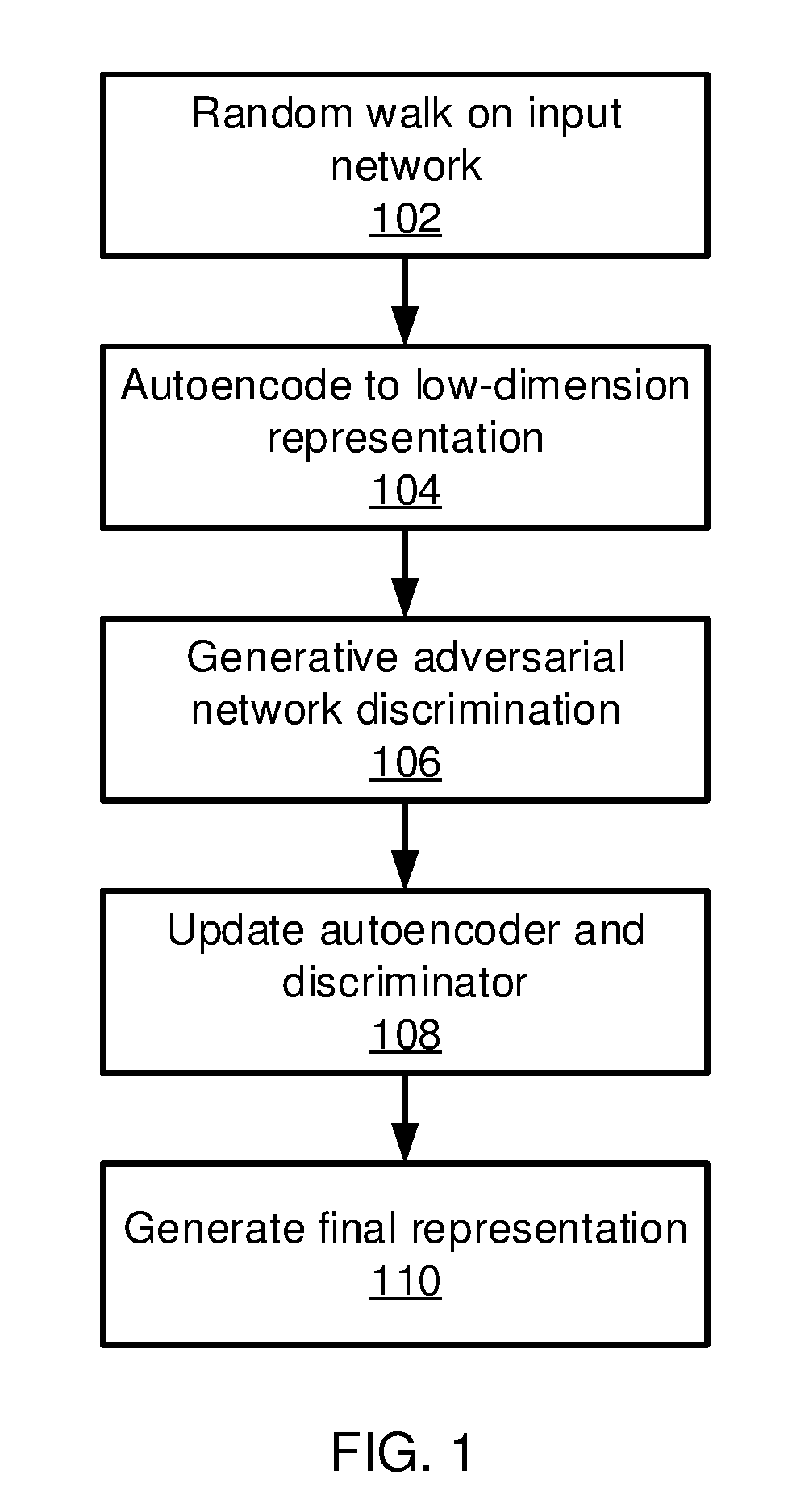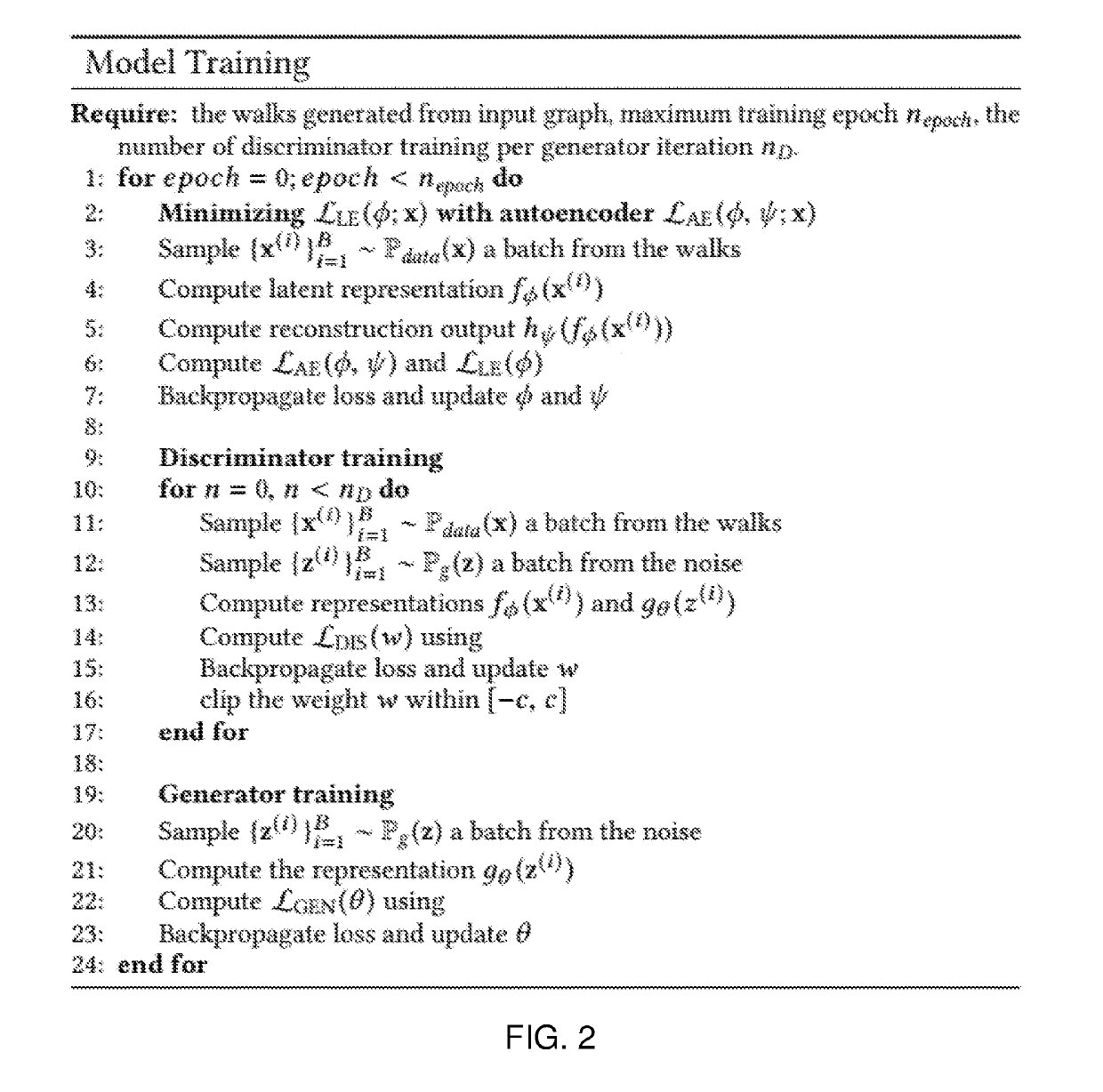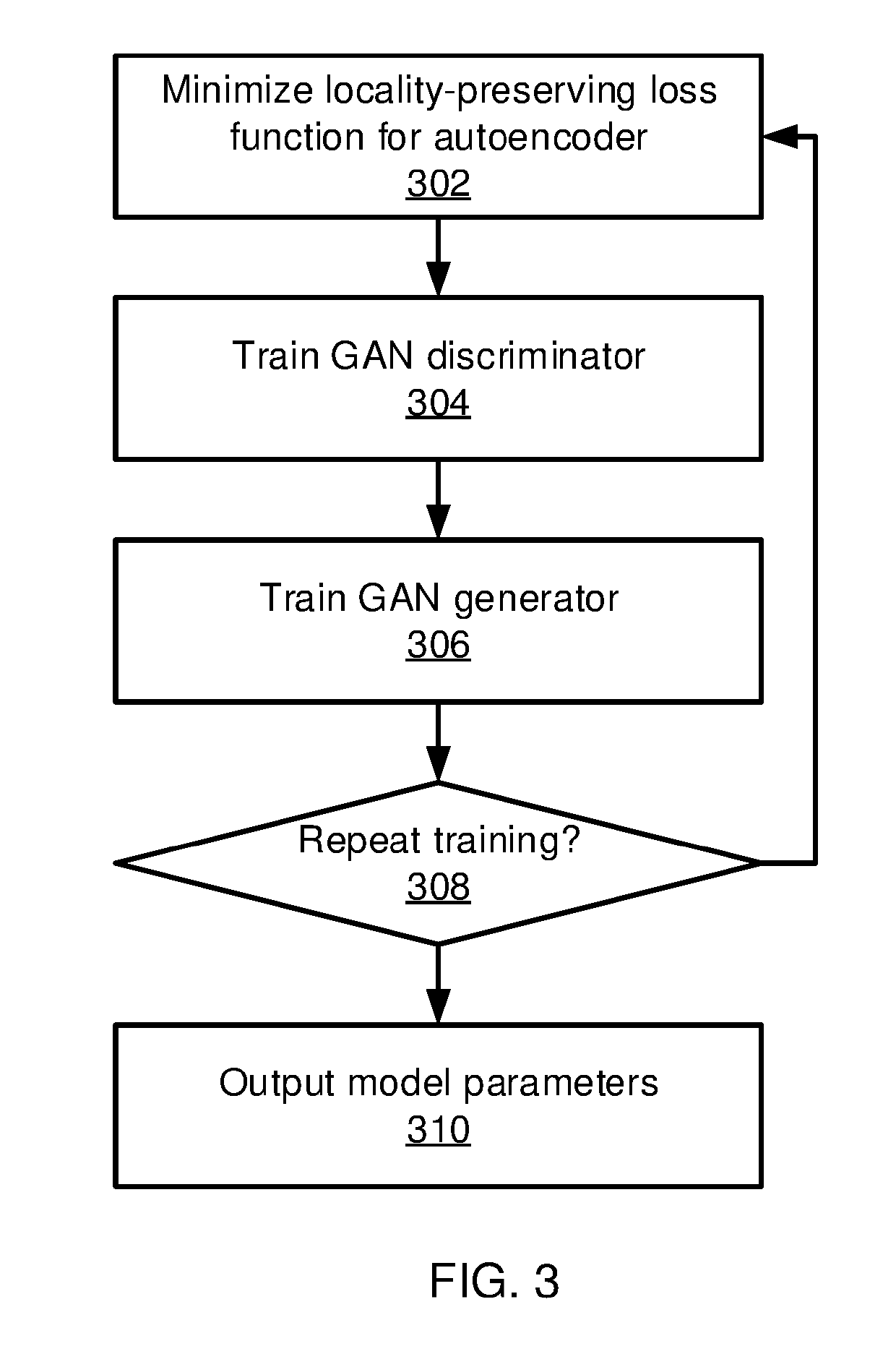Deep Network Embedding with Adversarial Regularization
a network embedding and adversarial regularization technology, applied in the field of machine learning, can solve problems such as time-consuming parameter tuning, existing network embedding approaches, and inability to capture non-linear properties of networks,
- Summary
- Abstract
- Description
- Claims
- Application Information
AI Technical Summary
Benefits of technology
Problems solved by technology
Method used
Image
Examples
Embodiment Construction
[0016]Embodiments of the present invention provide network embedding using adversarial regularization. These embodiments do not predefine an explicit density distribution for hidden representations, but can still represent distributions confined to a low-dimensional manifold. Vertex representations are learned through both locality-preserving and global reconstruction constraints and are regularized by generative adversarial training. The present embodiments thereby learn smooth, regularized vertex representations while still capturing the underlying network structure.
[0017]A result is that the present embodiments substantially improve the accuracy of network structure information embedding. The resulting embedded representations can be used, for example, in network reconstruction, link prediction, multi-label node classification, etc. For network reconstruction, node vectors learned from the network embedding maintain the edge information from the original graph and can be used to ...
PUM
 Login to View More
Login to View More Abstract
Description
Claims
Application Information
 Login to View More
Login to View More - R&D
- Intellectual Property
- Life Sciences
- Materials
- Tech Scout
- Unparalleled Data Quality
- Higher Quality Content
- 60% Fewer Hallucinations
Browse by: Latest US Patents, China's latest patents, Technical Efficacy Thesaurus, Application Domain, Technology Topic, Popular Technical Reports.
© 2025 PatSnap. All rights reserved.Legal|Privacy policy|Modern Slavery Act Transparency Statement|Sitemap|About US| Contact US: help@patsnap.com



